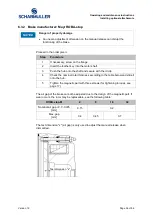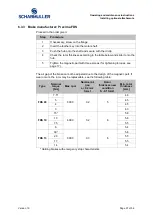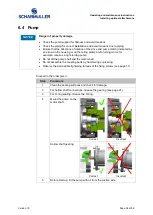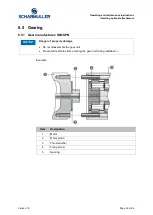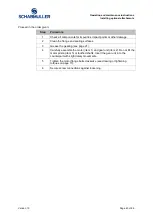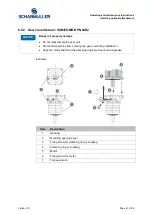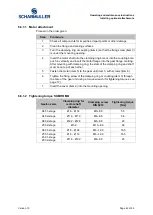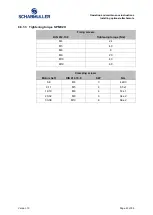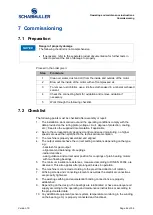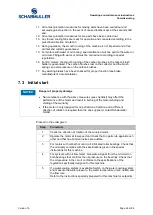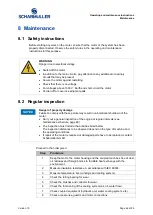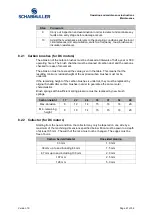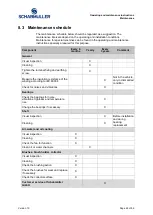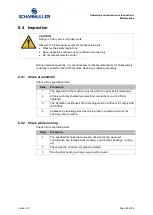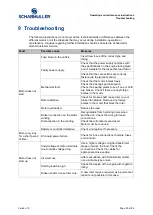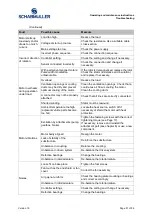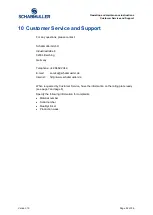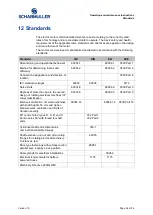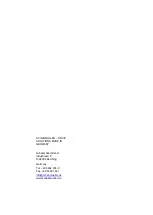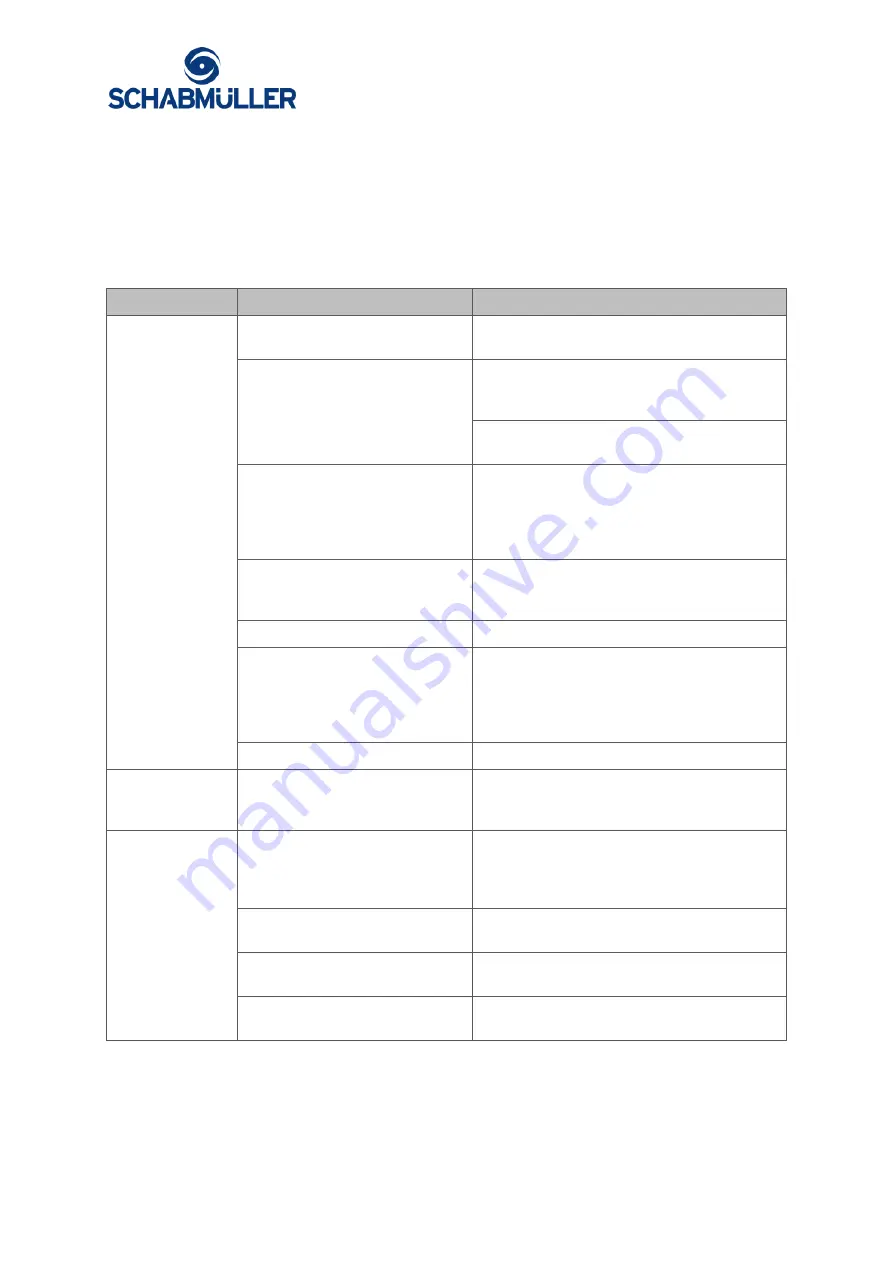
Operating and maintenance instructions
Troubleshooting
Version 1.0
Page 50 of 56
9 Troubleshooting
The following instructions do not cover all the technical details or differences between the
different motors or all the situations that may occur during installation, operation or
maintenance. Inquiries regarding further information should be directed to Schabmüller
GmbH Customer Service.
Fault
Possible cause
Measure
Motor does not
start.
Fuse blown in the vehicle.
Insert new fuses of the correct type and
rating.
Faulty power supply.
Check that the power supply complies with
the specifications on the engine rating plate
and is suitable for the respective load factor.
Check that the connections are correctly
fastened to the terminal board.
Mechanical fault.
Check that the motor rotates freely.
Check the bearings and lubrication.
Check the bearing plates to see if one or both
are broken. Check if there are any foreign
bodies in the motor.
Rotor defective.
Check for broken shaft, loose rotor core or
broken fan blades. Remove any foreign
bodies in the motor that block the rotor.
Motor overloaded.
Reduce the load.
Broken connection on the stator
winding.
Disconnection in the winding.
Recognisable from humming noise when
switched on. Check the wiring for loose
connections.
Check that all contacts are closed.
Motor must be rewound.
Battery or controller defective.
Check and replace if necessary.
Motor only runs
for a short period
of time.
On-board power failure
Check for loose connections to mains, fuses
and controls.
Motor does not
start up.
Undervoltage at motor terminals
due to mains voltage drop.
Use a higher voltage or higher transformer
stage or reduce the load. Check the
connections. Check the cables for
appropriate cross-section.
Incorrect use.
After consultation with Schabmüller GmbH,
use a suitable type or size.
Starting load too high.
Check the design of the engine with regard to
idling.
Broken shaft or loose rotor core.
A new rotor may be required, as a permanent
repair is not possible in this case.

